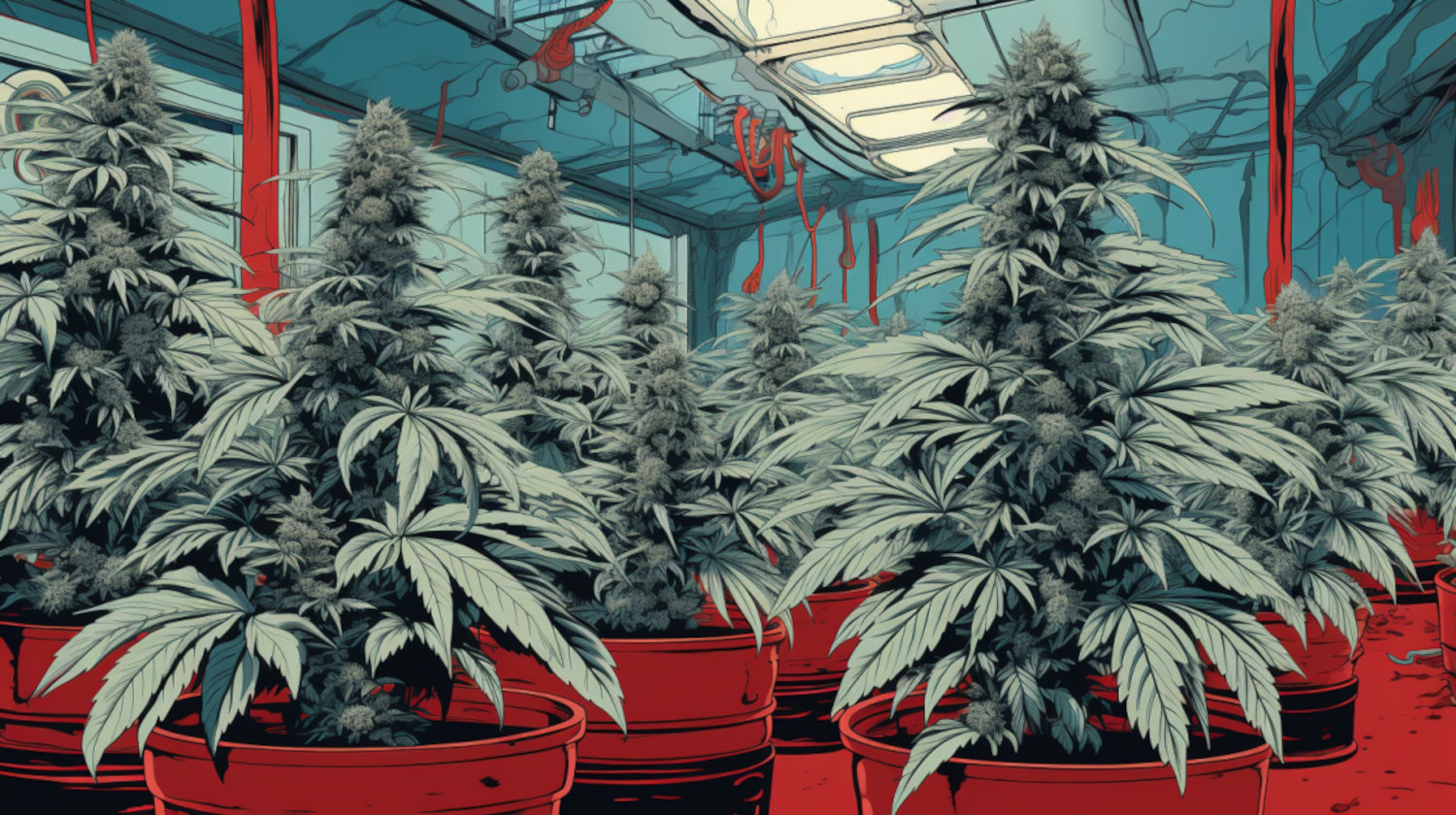In This Article
- Where Does Cannabis Ruderalis Come From?
- How Does it Compare to Indica and Sativa Varieties?
- What Kind of High is Ruderalis? Can You Smoke It?
- Properties of Ruderalis
- Smallest Type of Cannabis
- Exceptional Autoflowering Ability
- Speedy Growth Cycle
- How is Cannabis Ruderalis Useful to Cultivators & Breeders?
- What Else is Ruderalis Used for?
- Is it Legal to Grow?
- References
Key Takeaways
- Ruderalis is a hardy, auto-flowering cannabis variety that grows quickly and thrives in tough climates.
- Its unique traits make it popular for breeding hybrids and creating CBD-rich strains.
- If growing in your area is legal, it’s exceptional for beginners and those who prefer low-maintenance strains.
Cannabis ruderalis, formally known as Cannabis sativa subspecies sativa variety spontanea, is the lesser-known variety in the cannabis family. It's often overshadowed by its more famous counterparts, high-THC cannabis varieties, afghanica, and indica. Yet, this resilient and fascinating variety has a hardy nature, fast growth, and auto-flowering ability. It plays a key role in shaping modern cannabis strains. But what exactly is cannabis ruderalis? How does it differ from other types?
Where Does Cannabis Ruderalis Come From?
Cannabis ruderalis originates from some of the world's harshest and most unforgiving climates. It’s believed to have evolved in Central Asia, Eastern Europe, and Russia's wild regions, where other cannabis varieties struggled to survive.
“Ruderalis” is derived from the Latin word rudera, meaning “rubble." It's an apt name, perfectly describing its ability to exist in disturbed soils and challenging environments.
Unlike other cannabis varieties, ruderalis adapted to shorter growing seasons and unpredictable conditions. These adaptations make it a hardy and resilient plant, known for its autoflowering ability—a trait that allows it to flower based on age rather than light cycles. Such a unique evolutionary path has made Cannabis ruderalis a valuable resource for cultivators seeking robust genetics for cultivars.
How Does it Compare to Indica and Sativa Varieties?

Cannabis ruderalis stands apart from other cannabis varieties in several key ways. While those types are popular for their cannabinoid concentrations or looks, ruderalis is known for being tough and easy to grow. It’s a small plant, usually only a couple of feet tall, and may not produce as much THC.
Instead, ruderalis varieties may have a more balanced mix of THC and CBD, meaning they are less potent but might help with relaxation or wellness. Ruderalis is also special because it flowers automatically without needing specific light cycles, which makes it useful for creating new types of cannabis.
What Kind of High is Ruderalis? Can You Smoke It?
You can smoke cannabis ruderalis, but it doesn’t have the same strong effects as sativa or indica. Because it has less THC, it won’t get you very high. Instead, it might help you feel calm or relaxed.
Most people don’t use ruderalis on its own. It’s more common in hybrid cultivars, where growers mix its traits, like easy growing and quick flowering, with the higher THC levels of afghanica and indica varieties. Pure ruderalis is rare, so you’ll likely find it part of an auto-flowering strain.
Properties of Ruderalis

Cannabis ruderalis is unique in the cannabis family, with traits that set it apart from afghanica and indica. Its physical features, growing habits, and quick growth cycle make it a fascinating and valuable plant.
Smallest Type of Cannabis
Ruderalis is the smallest variety of cannabis, often growing just one or two feet tall. Its small size makes it ideal for growing in tight spaces or harsh environments. Unlike the taller and bushier afghanica and indica plants, ruderalis varieties have a simple structure and fewer leaves. This modest size reflects its origins in tough climates where growing fast and staying small helped it survive.
Exceptional Autoflowering Ability
Cannabis ruderalis is an autoflower. It starts flowering based on age instead of light cycles. Meanwhile, afghanica and indica varieties need specific amounts of light to flower. Ruderalis plants often begin flowering within three to five weeks after planting, no matter how much light they receive. Its unique ability likely developed as a survival tool in the tough climates where ruderalis grows naturally.
Scientists classify ruderalis as a variety of Cannabis sativa subspecies sativa because of its wild features and early flowering. Nowadays, "ruderalis" often means a cultivar that has one of three characteristics: a balanced level of CBD and THC, a small, hardy structure, and quick flowering times.1
This auto-flowering trait makes it easy for growers to work with. Breeders may use ruderalis genetics to create cultivars with short growing cycles, which produce faster yields throughout the year or outdoor season.
Speedy Growth Cycle
Ruderalis is known for its quick growth cycle. It can grow from seed to harvest in 8–10 weeks, much faster than afghanica (Indica) or indica (Sativa) varieties. This speedy cycle is another survival mechanism from its harsh native environments, where a short growing season meant plants had to mature quickly.
Growers love this fast turnaround, allowing multiple harvests in a single growing season. Combined with its auto-flowering ability, ruderalis is a favorite for those looking for efficient and reliable cannabis crops.
How is Cannabis Ruderalis Useful to Cultivators & Breeders?

Cannabis ruderalis is an autoflower that grows incredibly easily regardless of the light cycle. Its short growth cycle makes it valuable, as it can go from seed to harvest in as little as 8–10 weeks. Thus, it is perfect for growers who want quick results.
For home growers, the genetics of ruderalis mean less stress and more flexibility. These plants are perfect for people growing in smaller spaces or outdoors in unpredictable climates.
What Else is Ruderalis Used for?
Besides helping create new cannabis varieties, ruderalis has other uses. Its hardy nature makes it great for home growers, especially beginners, because it’s small, easy to grow, and works well in tight spaces or areas exposed to tough weather.
Ruderalis is also helpful for creating CBD-rich plants. This makes ruderalis popular in medical cannabis products and wellness-focused strains.
Is it Legal to Grow?
Whether you can (lawfully) grow cannabis ruderalis depends on where you live. In places where growing cannabis is accessible, ruderalis plants are legally treated the same as other types of cannabis. The rules for personal or commercial cultivation vary. Some areas allow home growing for personal use, while others need licenses or limit how many plants you can grow.
Before starting, check your local laws to ensure you follow the rules. If growing is legal in your area, ruderalis can be a great choice, especially for beginners or those seeking a low-maintenance option.
References
- McPartland JM. Cannabis Systematics at the Levels of Family, Genus, and Species. Cannabis and Cannabinoid Research. 2018;3(1):203-212. doi:https://doi.org/10.1089/can.2018.0039
↩︎
The information in this article and any included images or charts are for educational purposes only. This information is neither a substitute for, nor does it replace, professional legal advice or medical advice, diagnosis, or treatment. If you have any concerns or questions about laws, regulations, or your health, you should always consult with an attorney, physician or other licensed professional.




